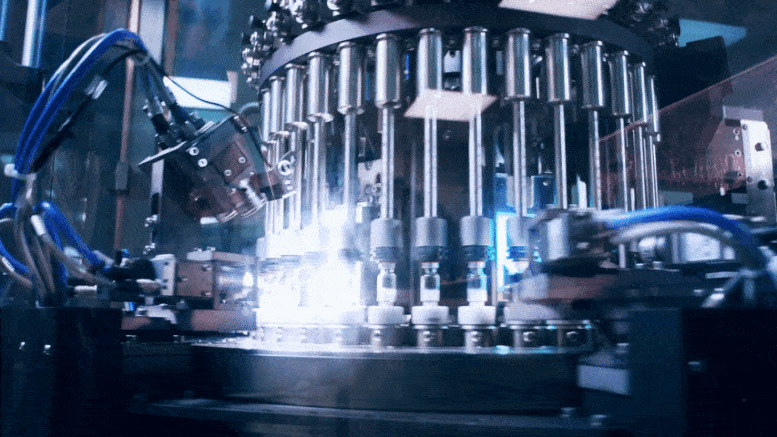New Nanobody COVID Vaccine Design Is Easier To Make, Doesn’t Need Cold Storage
0 View
Share this Video
- Publish Date:
- 7 November, 2021
- Category:
- Covid
- Video License
- Standard License
- Imported From:
- Youtube
Tags

Protein-based vaccine elicits strong immune responses in mice; approach can be used for other diseases.
Currently available COVID vaccines require cold storage and advanced manufacturing capabilities, making them difficult to produce and distribute on a large scale, especially in less developed countries. A new type of vaccine could potentially be much easier to manufacture and would not require refrigeration, Boston Children’s Hospital researchers report in the Nov. 2, 2021 issue of PNAS.
The researchers, led by Hidde Ploegh, PhD, and first authors Novalia Pishesha, PhD, and Thibault Harmand, PhD, believe their technology could help fill global vaccination gaps and that the same technology could be applied to vaccines against other diseases.
In mice, the vaccine elicited strong immune responses against SARS-CoV-2 and its variants. It was successfully lyophilized and later reconstituted without loss of efficacy. In tests, it remained stable and potent for at least seven days at room temperature.
Unlike current COVID-19 vaccines, the new design is entirely protein-based, making it easy to manufacture for many facilities. It has two components: antibodies derived from alpacas, known as nanobodies, and the part of the virus’s spike protein that binds to receptors on human cells.
“We could also attach the entire spike protein or other parts of the virus,” notes Pishesha. “And we can quickly and easily change the vaccine for SARS-CoV-2 variants.”
Shown on the far left, the vaccine consists of a portion of the receptor binding domain (RBD) of the spike protein, shown in dark blue, attached to a single-domain antibody fragment that recognizes class II proteins of the major histocompatibility complex (MHC), shown like orange ovals. These conjugates are home to antigen presenting cells (APCs), which then process and display the RBD to T and B cells. This leads to a robust immune response, eliciting both T cells and high titers of neutralizing antibodies that are protective against SARS-CoV-2 variants. Credit: Novalia Pishesha, Boston Children’s Hospital
Targeting antigen-presenting cells
The nanobodies are the most important part of vaccine technology. They are specifically designed to target antigen-presenting cells, critical cells in the immune system, by targeting class II major histocompatibility complex (MHC) antigens on the cell surface. This brings the business end of the vaccine — in this case, the spike protein segment — directly to the cells that will “show” it to other immune cells, triggering a broader immune response.
Current COVID-19 vaccines stimulate production of the spike protein at the site in the body where they are injected, and are believed to indirectly stimulate antigen-presenting cells, Ploegh says.
“But turning off the middleman and talking directly to antigen-presenting cells is much more efficient,” he says. “The secret sauce is the targeting.”
In experiments with mice, the vaccine elicited robust humoral immunity against SARS-CoV-2, stimulating large amounts of neutralizing antibodies against the spike protein fragment. It also elicited strong cellular immunity and stimulated the helper T cells that enhance other immune defense mechanisms.
A production advantage:
Because the vaccine is a protein, rather than a messenger RNA like the Pfizer/BioNTech and Moderna vaccines, it lends itself much more to large-scale production.
“We don’t need a lot of the fancy technology and expertise you need to make an mRNA vaccine,” Harmand says. “Skilled workers are currently a bottleneck for the production of the COVID vaccine, while biopharma has a lot of experience in producing protein-based therapies on a large scale.”
This could enable production of the vaccine in many locations around the world, close to where it would be used. The team has applied for a patent on their technology and now hopes to engage biotech or pharmaceutical companies to further test their work and, eventually, a clinical trial.
“It may be that the first application is something other than COVID-19,” says Ploegh. “This study was proof of concept that our protein-based approach works well.”
Reference: “A Class II MHC Targeted Vaccine Induces Immunity To SARS-CoV-2 And Its Variants” by Novalia Pishesha, Thibault J. Harmand, Paul W. Rothlauf, Patrique Praest, Ryan K. Alexander, Renate van den Doel, Mariel J. Liebeskind, Maria A. Vakaki, Nicholas McCaul, Charlotte Wijne, Elisha Verhaar, William Pinney III, Hailey Heston, Louis-Marie Bloyet, Marjorie Cornejo Pontelli, Ma. Xenia G. Ilagan, Robert Jan Lebbink, William J. Buchser, Emmanuel JHJ Wiertz, Sean PJ Whelan, and Hidde L. Ploegh, Nov. 2, 2021, Proceedings of the National Academy of Sciences.
DOI: 10.1073/pnas.2116147118
This study was supported by the Harvard Society of Fellows, the Swiss National Science Foundation, the NIH Director’s Pioneer Award and the European Virus Archive goes Global (EVAg) project. Co-authors Paul Rothlauf and Sean Whelan of Washington University have received unrelated funding in sponsored research agreements with Vir Biotechnology, AbbVie and sAB therapeutics. The rest of the authors declare no competing interests.










